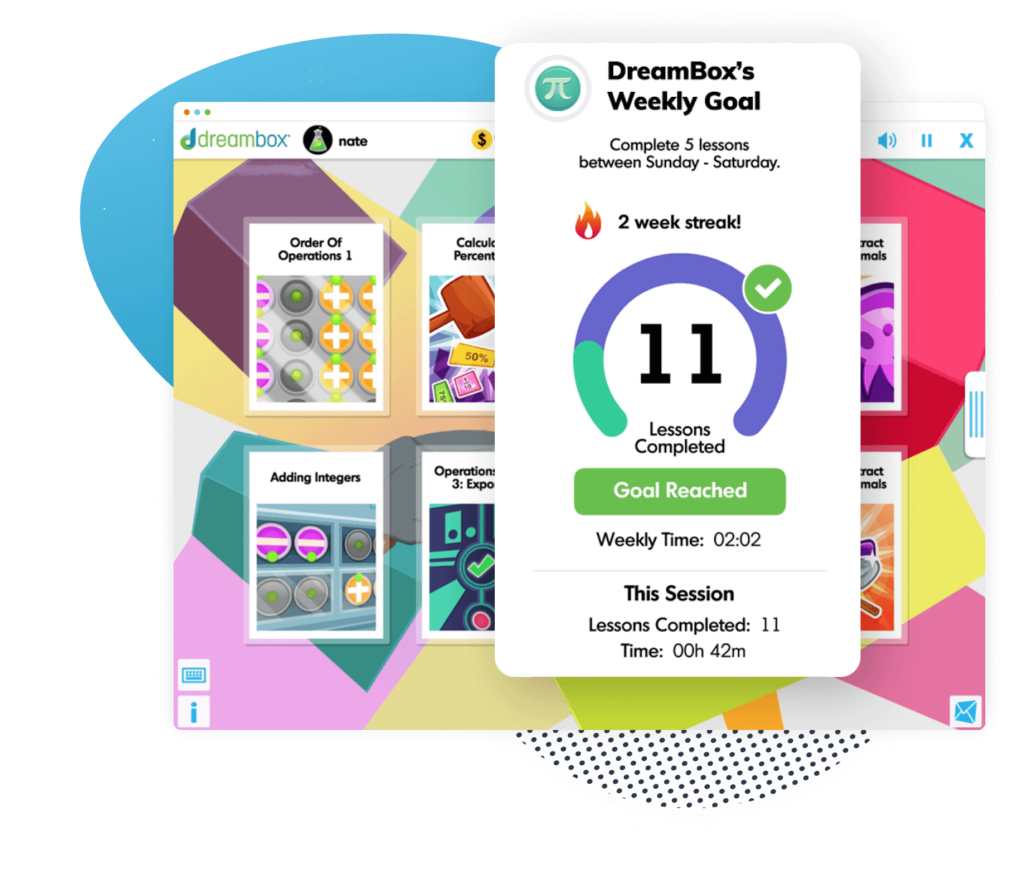What should a first grader know?
What should a first grader know? This readiness guide will help your child prepare for a new year!

Author
Katie Wickliff
Published:
July 2025
Key takeaways
- • Children begin 1st grade at different stages of development, and that’s ok!
- • Practicing 1st grade readiness skills at home will develop confidence and competence.
- • First graders should have a mix of academic, social-emotional, and physical readiness skills.
If you’ve got a kindergarten “graduate,” chances are they’re beaming with excitement and proud to become big 1st graders! Compared to the year prior, your child is independent and eager for new challenges and routines. As a parent, you probably feel this excitement too, but you might be wondering: Is my child ready? What skills will help them arrive at 1st grade feeling confident and prepared?
This article answers those common questions and highlights the readiness skills every 1st grader needs. Our simple guide and checklist breaks it all down, so you can support your child all year long. We’re here to help make the transition smooth and stress-free, so you can worry less and celebrate more!
Why does 1st grade readiness matter?
Kindergarten focuses on foundational skills, such as recognizing letters, counting, and learning how to be part of a classroom community. In first grade, students build on those basics with new challenges, greater independence, and more structured routines.
When children start the school year prepared, they feel more confident and motivated to learn. They tend to adapt quickly to classroom routines and meet challenges with excitement. While academic readiness is important, just as essential are the social, emotional, physical, and behavioral skills that help kids adjust to a new school year.
If this sounds overwhelming, please know that teachers understand that all kids grow at their own pace. Still, helping your child develop these readiness skills can set them up for a great 1st grade experience.
Social emotional
Parents and caregivers can help their child prepare for 1st grade by continuing to focus on social, emotional, and behavioral development. While kindergarten teachers work hard on building these habits, summer is the perfect time for a refresher. This way, kids start 1st grade ready for the next step. Social-emotional readiness skills include:
- Listening and Following Directions: 1st graders are expected to follow directions in the classroom and on the playground, so practice this at home by playing games like “Simon Says.”
- Sharing and Taking Turns: Give your child plenty of opportunities to practice interacting with classmates, neighbors, and family members. The more chances they have to engage with others, the more natural sharing and taking turns will become.
- Expressing Needs Respectfully: While this is always a work in progress, encourage your child to communicate their feelings calmly and respectfully. Reading picture books together can help develop this skill. Our family loved “When Sophie Gets Angry” and “My Mouth is a Volcano.”
- Separating from a Parent or Caregiver: Your child likely had many chances to practice being apart from loved ones during their kindergarten year, but after a long summer break, this separation can feel difficult again. Create a short, consistent goodbye routine– such as a hug, wave, or comforting phrase.
Table of contents
Strengthen your math skills with DreamBox
Academic skills for first graders
In addition to helping your child prepare for the social, emotional, and behavioral expectations of 1st grade, it’s a great idea to practice academic skills like basic addition and subtraction, identifying sight words, and recognizing shapes. Even if they grasped these concepts in kindergarten, refreshing their skills during the summer will help them start the year strong.
1st grade literacy skills
- Story Elements, Structure, and Characteristics: 1st graders should be able to understand basic story elements like plot, characters, setting, and conflict. They should be able to retell a simple story and make predictions.. In 1st grade, students learn the characteristics of fables, myths, and legends. Parents can help develop these habits by reading aloud daily–even 10-15 minutes makes a difference. Visit the library and let your child choose books that interest them, even if they aren’t the “right” level.
- Writing: In 1st grade, students should recognize and write their own names, build simple sentences, and tell a story using pictures. They should also be developing a pincer grip–the ability to hold a writing utensil correctly. Additionally, 1st graders are encouraged to use inventive spelling to communicate, while also beginning to learn proper spelling of basic words. Encourage writing skills by having your child keep a story journal, copy grocery lists, or write letters to family and friends.
- Sight Words: 1st graders will spend a great deal of time learning sight words. There are a few commonly used sight words lists, such as Dolch Sight Words, Fry Sight Words, and High Frequency sight words. Your child’s school should be able to tell you which list they use, and make sight words fun by playing games like Zingo, Sight Word Swat, or by using colorful sight word flash cards.
1st grade math skills
- Number Sense: 1st graders should practice skills that help develop basic number sense, like counting numbers 0-20 and recognizing these numbers out of order. In addition to basic counting, children learn how numbers work together by comparing numbers and recognizing place value. They also use different strategies to practice adding and subtracting whole numbers within 20. Parents can help with this readiness skill by looking for numbers in real life settings, reading counting books, or using physical objects to help visualize number relationships.
- Shapes: Children should be able to name common shapes such as a circle, square, or triangle, describe their attitudes, and recognize shapes in everyday life. Building with LEGO blocks, cutting shapes out of construction paper, or going on shape hunts around the house or backyard are fun ways to practice shapes.
- Telling Time: In first grade, students learn to tell time to the hour and half-hour using both analog and digital clocks. Parents can make this skill fun by connecting time to daily routines—like saying, “We’ll leave for soccer practice when the big hand is on the 4.” Using toy clocks provides a hands-on way for kids to see how the hour and minute hands work together. Online programs like DreamBox Math also offer engaging games and activities to help your first grader practice telling time.

The math program that drives results
Get started today!
DreamBox adapts to your child’s level and learning needs, ensuring they are appropriately challenged and get confidence-building wins.
Fine and gross motor skills
Developing strong fine and gross motor skills helps kids feel confident, coordinated, and independent. By consistently practicing these skills, children can participate fully in classroom activities and playground fun.
Fine motor skills
These tasks require hand-eye coordination and involve small, precise movements. Here are just a few of the skills 1st graders should practice:
- Holding a Pencil or Crayon Properly: 1st graders should continue developing the proper writing form, called the “pincer grip.” Using short crayons or golf pencils for tracing and coloring helps naturally encourage the right grip.
- Cutting with Scissors: Children will do plenty of cutting in 1st grade. They’ll practice cutting along straight lines and cutting out shapes.
- Tying Shoelaces: Some 1st graders will know how to tie their shoes, but many will still need guidance. Encourage children to wear shoes with laces instead of Velcro, and break down the steps into simple motions.
Gross motor skills
These involve movement and coordination of large muscle groups. These skills build strength and coordination for 1st-grade readiness.
- Running, Jumping, Climbing, and Balancing: By 1st grade, children should feel confident moving their bodies in a variety of different ways. Parents can help their child develop these gross motor skills by encouraging outdoor play, exploring playground equipment, or trying different sports.
- Moving to Rhythm: Your child doesn’t need to be a natural dancer to develop confident movements. Turn on silly songs, have a freeze dance party, or march around the room to a catchy beat.
Self care and independence
- Managing Personal Belongings: Children should be able to pack their own backpack, put away their belongings, and retrieve them at the end of the day. Minimize frustration by allowing extra time to encourage these skills at home.
- Using the Bathroom Independently: They should use the restroom without help, flush, and wash hands properly.
- Following Routines and Instructions: Kids should follow simple directions, begin tasks independently, and transition between activities. Establish a simple, low pressure morning and evening routine at home.
FAQs
Before entering 1st grade, a child should manage some tasks independently, know basic letters and sounds, count to 20, and follow simple directions and routines.
You can help your child prepare for first grade by reading together, counting items in everyday life, practicing self-care, and providing plenty of chances to interact with other children.
Don’t worry if your child hasn’t mastered these skills by the time school begins. Simply being familiar with these concepts can help your child feel confident and ready to learn. If you are still concerned, talk to your child’s teacher or pediatrician for guidance.
Take at home math practice to the next level
Empowering parents and educators to make math practice more impactful. Plus, your kids will love it.


About the Author
Katie Wickliff
Katie holds a master’s degree in Education, has over 15 years of education experience as a primary classroom teacher, and is Orton-Gillingham certified tutor. Most importantly, Katie is the mother of two primary school students, ages 8 and 11. She is passionate about maths education and firmly believes that the right tools and support will help every student reach their full potential.